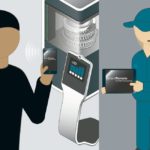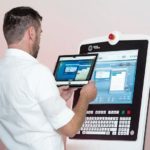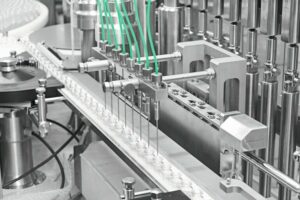Even before the spread of Sars-CoV-2, it was clear that digital tools are decisive factors for the success of future pharmaceutical production. Now corona has significantly increased the necessity of such aids. For example, it is now more important than ever to be able to use live chats and video conferences for remote maintenance as well as augmented reality applications for increased precision.
What helps here are particularly agile methods in order to become more flexible and deploy resources specifically. Even if the main processes associated with tableting and capsule filling remain mechanical for the foreseeable future, digital solutions will mean that all associated processes will, however, become more efficient, faster, and safer.
Agile methods for faster development
The question as to how digital tools can optimize pharmaceutical production is a core issue at Fette Compacting. On the basis of pharmacists’ requirements, a new division is developing software solutions for manufacturing tablets and capsules. The central focus is on improving the efficiency of production as a whole in that operators, maintenance technicians, and their supervisors are supported and data utilized intelligently.
The new division goes by the name of OSDi and builds a bridge between the manufacture of Oral Solid Dosages and the digital future. The OSDi team utilizes the agile methods of Design Thinking and Lean Start-up which are also widely established in Silicon Valley. These methods are linked by the fact that they are consistently oriented toward the requirements of users. In fact, users are included in the development process right from the start, particularly operators, maintenance technicians, production managers, and quality managers.
In practice, this translates into an agile approach entailing the OSDi team initially drawing up new product sketches on the basis of users’ “pains and gains”. These are then sent back to the customer for a second opinion. Using the feedback obtained, the unit collaborates closely with the customers to create a click dummy, a prototype, and finally the finished tool. The customer’s
perspective is decisive at all times. This way, ideas with less potential can be detected swiftly and rejected if necessary, which
reduces the development process and conserves resources.
Interactive learning content
Some digital tools have already been created on this basis at Fette Compacting. And they already address a preliminary stage which is decisive for success: training new personnel. Via an app, experienced trainers make 3D-animated learning content available. Using interactive graphics, animations, and detailed instructions, new employees can familiarize themselves with the entire process of solid formulation production. In
several modules, the learning platform illustrates how individual parts of the machine are assembled and protected from wear, for example. After each module, the trainees are obliged to complete a small test on the training content. Their learning progress is
depicted in an overall summary.
Fette Compacting is working on a range of virtual training units to enable work processes to be practiced. The first available unit concerns the preparation of an isolator for cleaning. Without blocking the real machine, employees can practice the process as often as they want using virtual glove ports, VR glasses, and a gaming notebook. The standardized process is supported by an avatar and a virtual checklist. Once participants feel sufficiently confident, they can move to a test mode where they can clean the isolator without instructions. Those who pass the test receive a certificate. Gaming ele-ments such as a high score also make VR training more fun and increase the motivation of the participants.
Digital overview
OSDi also has initial applications ready for ongoing production: the team has developed a Fleet Manager to provide a swift overview of the machines at all locations.
A single glance at a mobile end device indicates which machines are running and which ones are down. Users can arrange their machine park in the app and focus on individual production halls or manufacturing lines in particular.
Those who wish to access machine data live without being bound to a cloud solution can use a special Fette Compacting interface. This permits access to real-time production data independent of the respective location. The KPI dashboard offers an overview of the current production and machine status. The monitoring functions can be used for recording and exporting all process values.
Often it is not sufficient to merely know the status quo. It is also increasingly important to detect possible error sources at an early stage. A condition monitor collates production and machine data, harmonizes them, and visualizes them on any device via a secure cloud. Maintenance teams use the app to see the real-time status of their machines and plants. A comparison with historical measurements indicates deviations at an early stage and prevents downtimes. It can even be used to configure third-party machines.
The functions of the condition monitor are further extended by a performance manager. Among others, it visualizes measurements and notifications from all connected devices – live and chronologically. This way, it indicates any statistical deviations and communicates performance potentials.
Swift detection and troubleshooting
And finally, troubleshooting is also more efficient thanks to OSDi tools: with a smart guide, operators can remedy frequent errors at the instruction of technical experts. The app runs on a mobile device or a desktop computer. Images, animations or videos provide information on the respective error and illustrate the steps for a solution. Furthermore, users can create their own instructions for their machines, regardless of the brand.
If the troubleshooting guide is not sufficient, a smart remote tool offers personal live chats and video conferences with experts. Operators use the app on a mobile device and can implement the instructions provided by experts directly on the machine. Augmented reality increases the precision of troubleshooting via visual tools such as a “finger pointer”. This remote tool saves solution instructions in a customer archive enabling users to access it at will.
All in all, OSDi currently includes eight functional applications for solid formulation production. The fact that more apps and services will follow is clearly foreseeable in line with the agile methods already used.
Fette Compacting GmbH, Schwarzenbek










